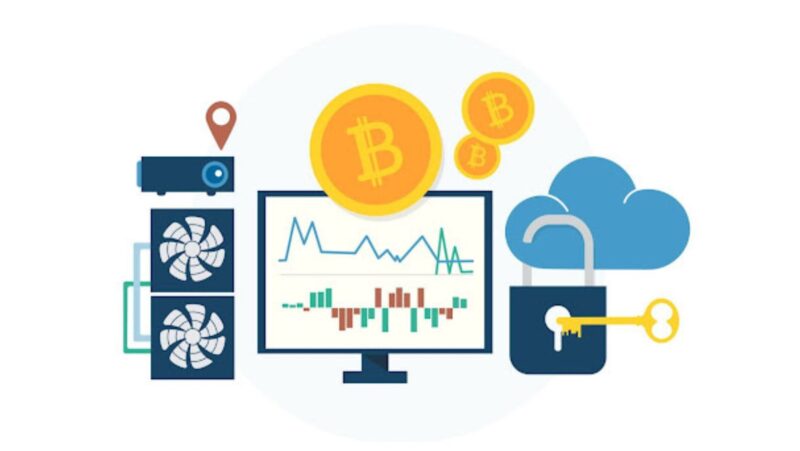
We are currently in unprecedented times for the U.S. and world economy. The stay-at-home orders issued due to the COVID-19 pandemic caused a sharp contraction in economic activity and spending. As investors question when and if this is a repeat of the dot com bubble burst of 2000, it’s important to understand that technology isn’t the same as it was two decades ago—there were different players involved, valuations were more homogeneous, consumer confidence was higher and then technology itself wasn’t as advanced or widely available.
This article will look closely into these factors to illustrate why we can’t count on history repeating itself.
Major Differences between 2000 and Today
The tech bubble of 2000 was marked by investor mania leading to overvalued tech stocks. Goldman Sachs believes the current tech rally is different due to expanded user base, unprecedented innovation, and clear long-term value.
Let’s dive into the major differences between the tech bubble of 2000 and the current tech rally to help us understand why this isn’t like 2000.
Market Valuations
Market valuations of technology companies in 2000 saw significant–and some would say, irrational–speculation and inflated stock prices with many firms receiving exaggerated valuations based on projected growth that seemed too good to be true. By contrast, the current market is driven by fundamental metrics such as earnings, revenues and cash flow. Furthermore, today’s average market valuation for the technology industry is more reasonable with prices at market values lower than those seen during the dot-com bubble of 2000.
The valuations are based on more natural metrics such as future revenues and growth potential. Companies today have demonstrated considerable progress in monetizing their products, technological development and cost/improvement initiatives. These achievements are being properly valued at a reasonable rate of return, further reinforcing prudent investment decisions rather than blind speculation. Companies today are proving their worth through significant industry advancements to support their sustainable growth plans while delivering value to existing stakeholders over the long-term.
Finally, the overall capital intensity of today’s technology sector is significantly lower compared to 2000 where companies were often investing aggressively without much basis beyond a belief that they could continue to grow indefinitely simply by continuing to “burn” money while they scaled up infrastructure and operations “just because” either economically or strategically it felt right. Today’s companies are much better able to show tangible returns on investments before expanding operations or deploying new technologies which means more injections of capital are likely going into areas that can generate tangible returns; thus improving the ability for these organisations to deliver value over time amid volatility cycles in markets and economies.

Technology Advancement
In 2000, technology advancements were focused on the internet and cellphone usage. Since then, improvements in technology have changed our way of life exponentially. Today’s technology advances are far broader, encompassing robotics and AI, automation processes, green-energy products, new material technologies – and practically every product produced can now be connected to the internet.
The amazing physical materials available today result in longer-lasting products with improved performance. Many consumer items — cars, phones and tablets — are built to last longer than those from 20 years ago. Batteries keeping these items charged also last much longer than those from the past due to improved tech like lithium ion cells that don’t suffer from memory effect fatigue as did NiCad cells of yesterday.
The connectivity today’s products afford allows for customization that was impossible two decades ago. The range of: mics and sensors; customer data; shared resources; games embedded in everyday items — makes purchase decisions more complex and better suited for a person’s individual needs.
High Speed internet has revolutionised communication across digital networks permitting real-time collaboration anywhere through video or chat platforms via the cloud – leading to nearly instant customer service resolution in some cases while allowing people around the world to work together seamlessly on projects traditionally requiring travel or time zone impairments limiting productivity
In short, twenty years later – advancements have taken a once simple concept—using technology—to an ever evolving universe challenging traditional industries across numerous fields while harnessing a global marketplace of consumers with virtually limitless possibilities in changing how tasks are performed every day worldwide!
Regulatory Environment
There is much less oversight in today’s regulatory environment than in 2000. Then, regulations were implemented after the tech bubble burst to ensure investors had accurate information about companies and could gauge the value of uncovered investments. At the same time, government resources or assistance for small businesses were minimal in 2000 and today, government resources are more plentiful to provide economic stability and growth.
The Securities and Exchange Commission (SEC), the governing body responsible for monitoring stock prices and ensuring they comply with laws, has increased its reach since 2000. In addition, several private organisations have emerged in recent years–such as Seed Investment Roundtables—to serve as watchdogs, helping to identify companies that should be avoided. These organisations provide:
- Resources.
- Advice on startups’ performances.
- Little-known details such as possible legal issues they may face.
Moreover, prominent venture capitalists like Andreessen Horowitz have become much stricter when evaluating potential investments due to the current competitive landscape and heightened scrutiny from regulators, even removing certain investments from their portfolios entirely due to compliance risks. Finally, a key difference between today’s tech landscape and the tech bubble of 2000 is that it’s far easier for mass adoption or success with ‘gig economy’ businesses or app-based businesses due to both social media platforms available for marketing along with established payment channels like Apple Pay or PayPal .

Goldman says to keep buying the big five tech stocks because this isn’t 2000
Goldman Sachs recently announced their advice to keep buying the big five tech stocks, citing the difference between today’s tech stocks and those of the tech bubble in 2000. According to the firm, there are important distinctions between the two, and their advice is based on the difference in fundamentals and valuations.
Let’s take a closer look at why Goldman Sachs believes that keeping buying tech stocks is a good investment.
Strong Fundamentals
The Goldman Sachs technical strategists believe that the macroeconomic fundamentals and corporate fundamentals of the Big 5 tech stocks—Apple, Amazon, Microsoft, Google, and Facebook—make them attractive investments. In addition, the Big 5 will likely benefit from increased digital commerce precipitated by the global pandemic and increased demand for cloud computing services.
The Goldman Sachs technical strategists point out that Apple, Microsoft, and Google’s products are widely used daily by people worldwide. In addition, Amazon’s e-commerce platform is a go-to for many consumers during this period of stay-at-home orders. And Facebook’s advertising options can efficiently reach a wide audience. All these factors contribute to strong corporate fundamentals behind these stocks.
In addition to strong corporate fundamentals, the macroeconomic environment supports this market rally. For example, the U.S., China and other countries worldwide have implemented economic aid packages that should help consumers and businesses mitigate much of the headwinds associated with this unprecedented public health crisis. In addition, low interest rates should also support consumer spending which bodes well for tech companies that offer services through digital channels or rely on consumer data to inform their business strategies.
Furthermore, investors may view other sectors—such as energy and consumer discretionary—as less attractive right now due to some short term headwinds they may face over the near term, which could lead them to use those funds instead to take advantage of any potential upside in tech stocks instead due to their strong fundamentals outlined above. This may be one of the primary drivers behind Goldman’s recommendations regarding these five tech stocks despite similarities some may draw between this sector today compared to what happened during the 2000’s dot com bubble.
Long-term Growth Potential
Despite recent rapid gains, Goldman Sachs believes current valuations leave the large-cap technology stocks well-positioned for long-term growth. In a note to clients on Monday, chief US equity strategist David Kostin highlighted the five major companies he believes present the greatest opportunities going forward: Amazon (AMZN), Microsoft (MSFT), Apple (AAPL), Facebook (FB) and Alphabet’s Google (GOOGLE).
Kostin noted that tech stocks in general have seen a significant run-up in 2020 due to “aggressive adoption of digital products and services,” and also pointed out that their outperformance has been greater than during the tech bubble of 2000. However, he argued that investors should look beyond traditional valuation metrics such as price/earnings ratios to more accurately assess tech stocks’ potential.
Instead, Kostin argued that market leaders should be judged based on their dominant competitive positioning, total addressable market (TAM) opportunity and secular growth story — all key characteristics which Goldman believes point towards strong performance among the Big Five despite what some may consider lofty valuations.
Kostin highlighted these five companies with an eye towards their capacity for further long-term growth. For example, he stated that Amazon can continue to outperform due its durable competitive edge and expanding TAM opportunity across multiple segments including cloud computing and digital advertising. Likewise, Microsoft’s TAM opportunity was described as vast given its “ongoing transition from a legacy software business into a leader in cloud infrastructure services.” Meanwhile Apple’s product segment margins were cited as potentially rising thanks to a suite of new products slated for 2021 including 5G iPhones and Macs with Apple Silicon chipsets.
In short, Goldman is confident that these five companies stand out amidst current market conditions due to their wide range of pent up demand paired with strong cost control mechanisms — suggesting investors will have plenty more opportunities beyond 2020 when it comes time to cash in on Big Tech’s potential.

Low Interest Rates
Regarding tech stocks, investors have not yet become afraid of another dot-com bust like the one in 2000. So while many are looking for signs of a bubble in the sector, they appear to be unfounded – and Goldman Sachs Group Inc. is advising investors to take advantage by buying into tech’s leading names.
The investment firm suggests that one of the key reasons companies like Apple Inc., Microsoft Corporation, Alphabet Inc., Facebook Inc., and Amazon.com Inc are holding up so well is because of low interest rates around the world. These low rates make investments less attractive for regular buyers, leading many to pile into stocks instead to gain returns on their money.
Furthermore, ultra-low interest rates force investors toward higher-risk investments to attain any return on their funds – and tech stocks fit this criteria as some of the most volatile ones available. Goldman Sachs adds that given how far along these companies are in product development cycles, market capitalization size and still strong upside potential, they remain very attractive targets for those looking for more risky investments with a higher reward potential.












